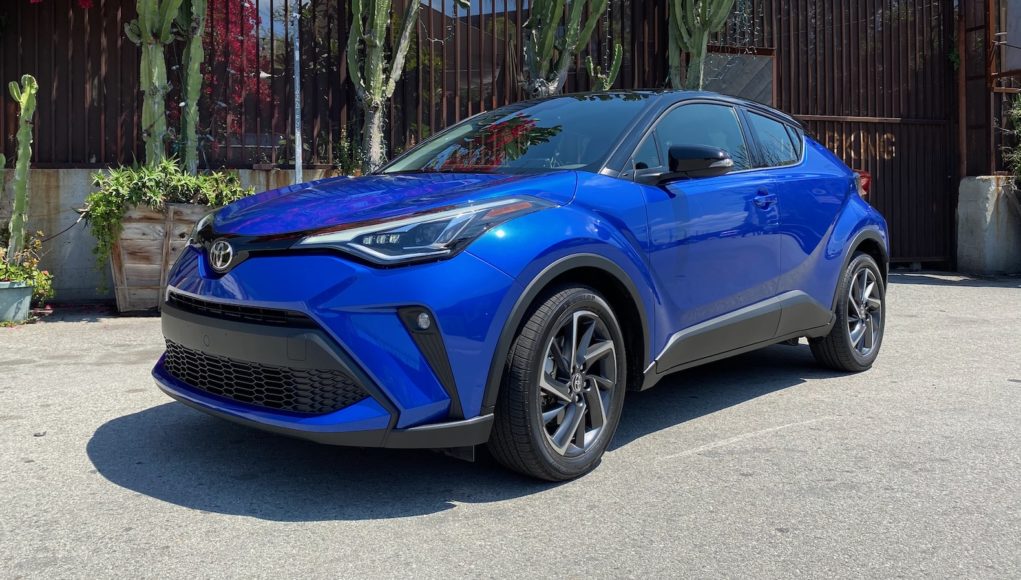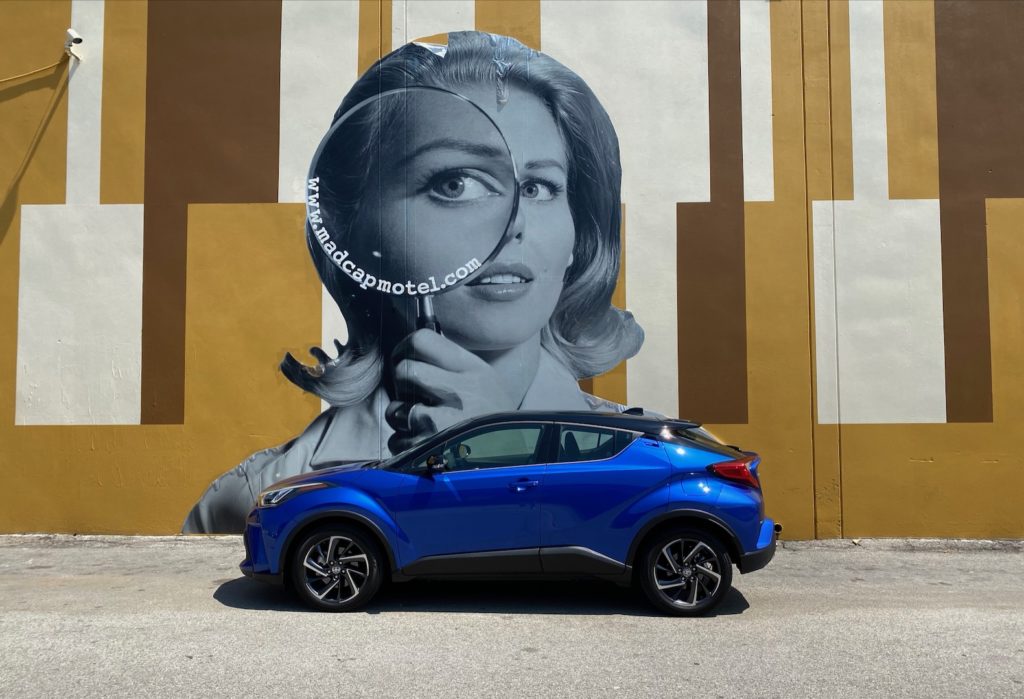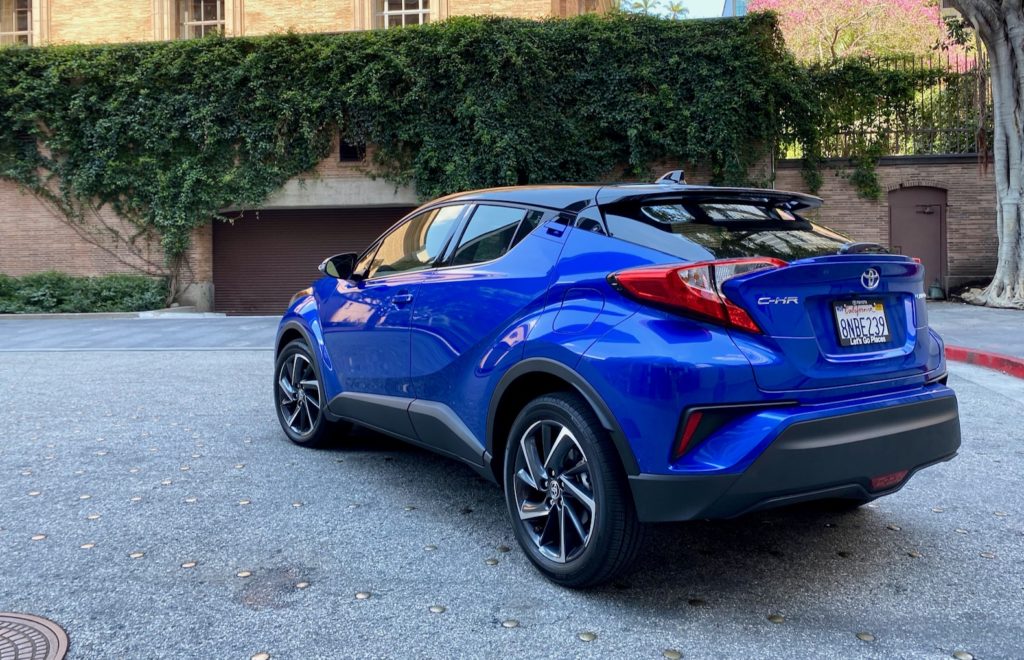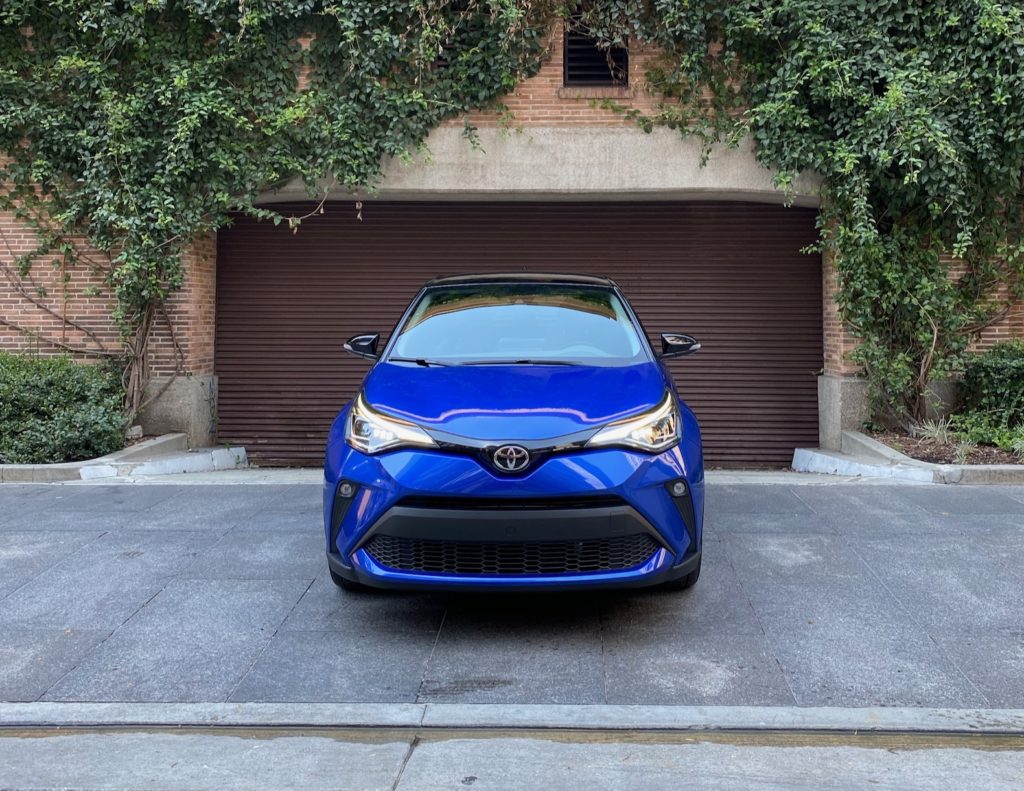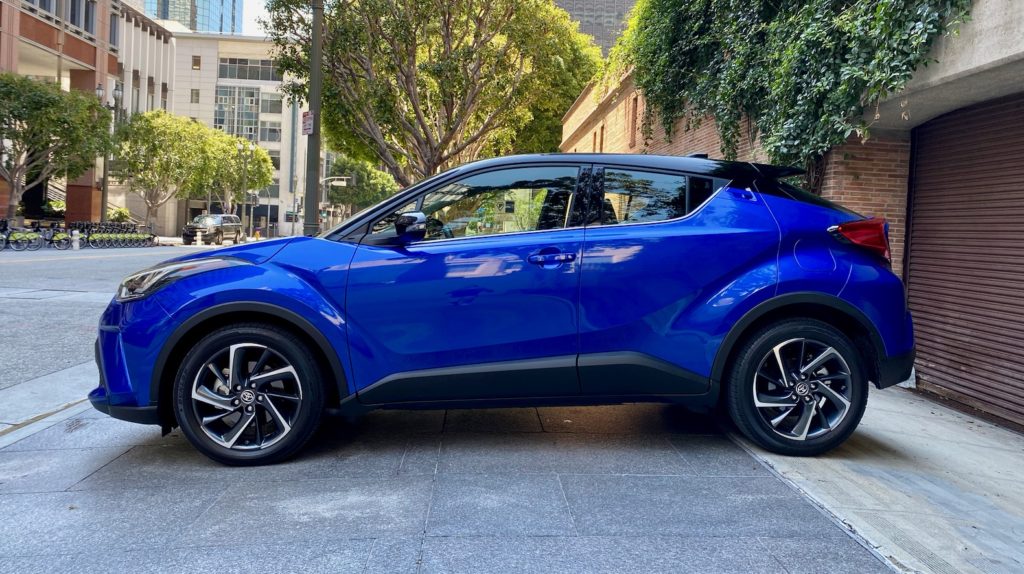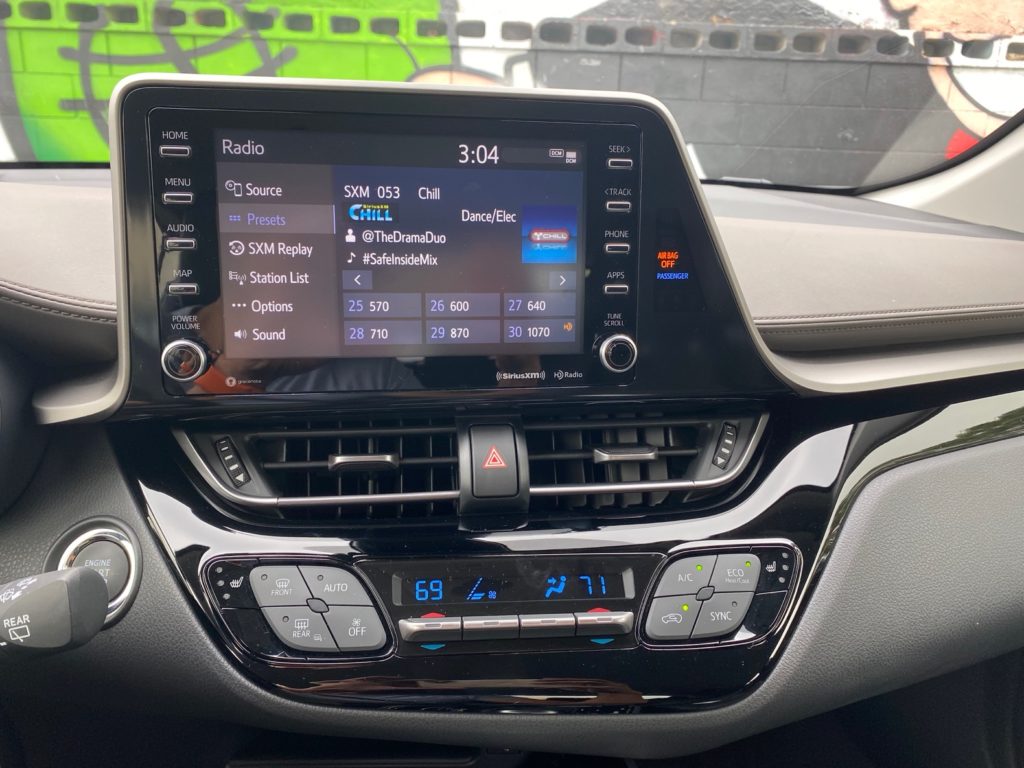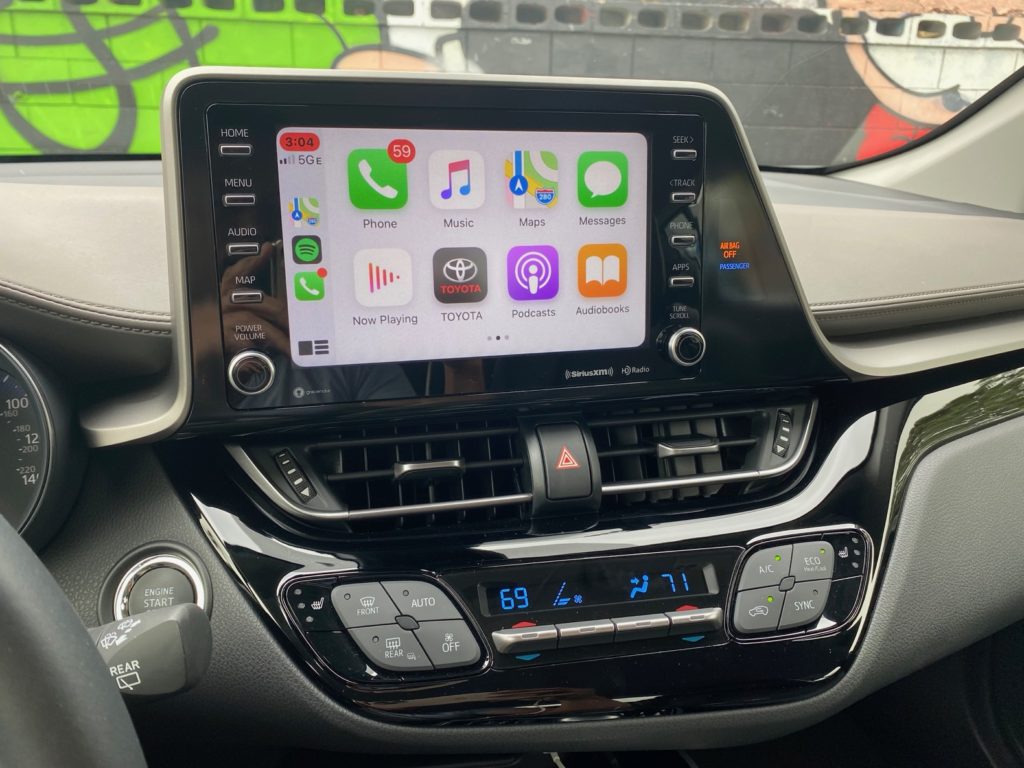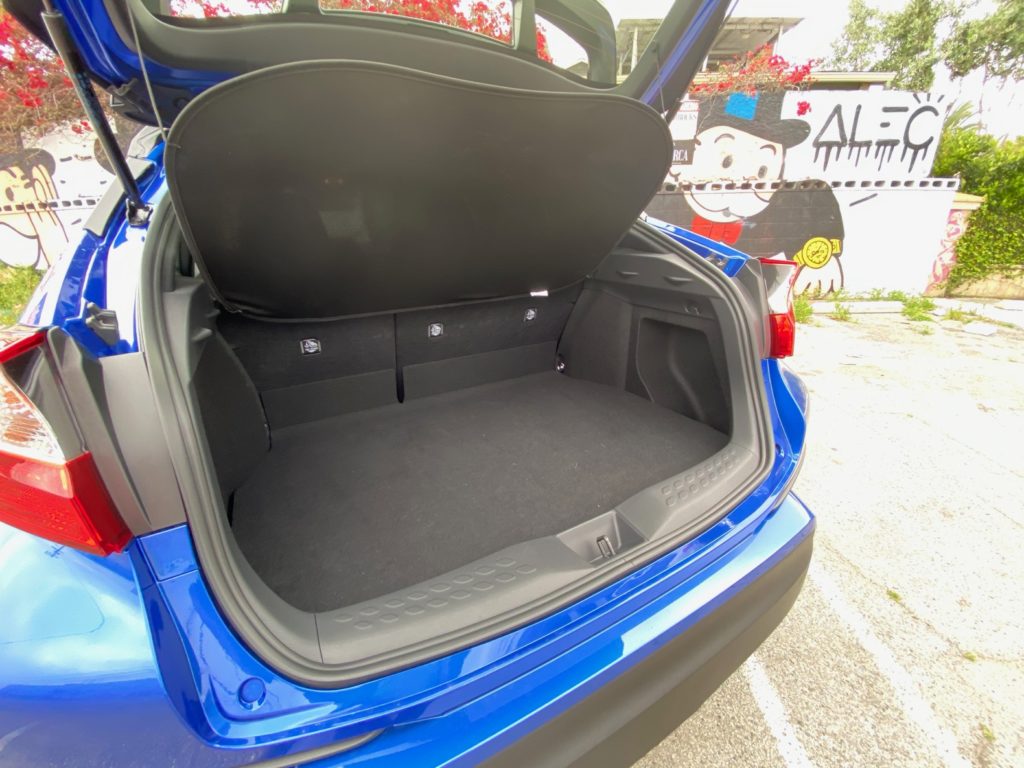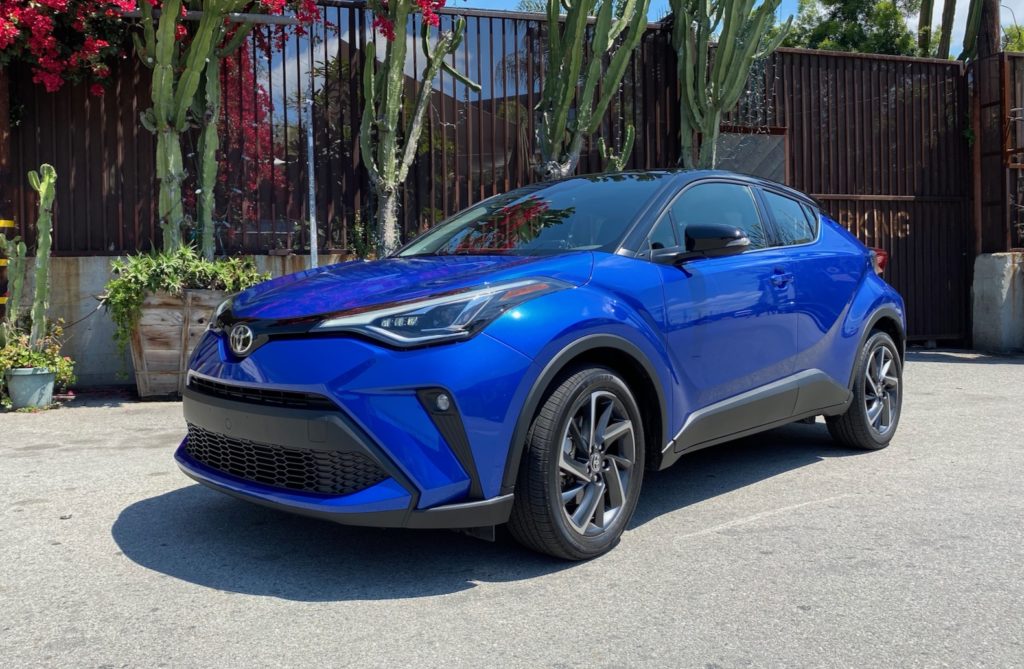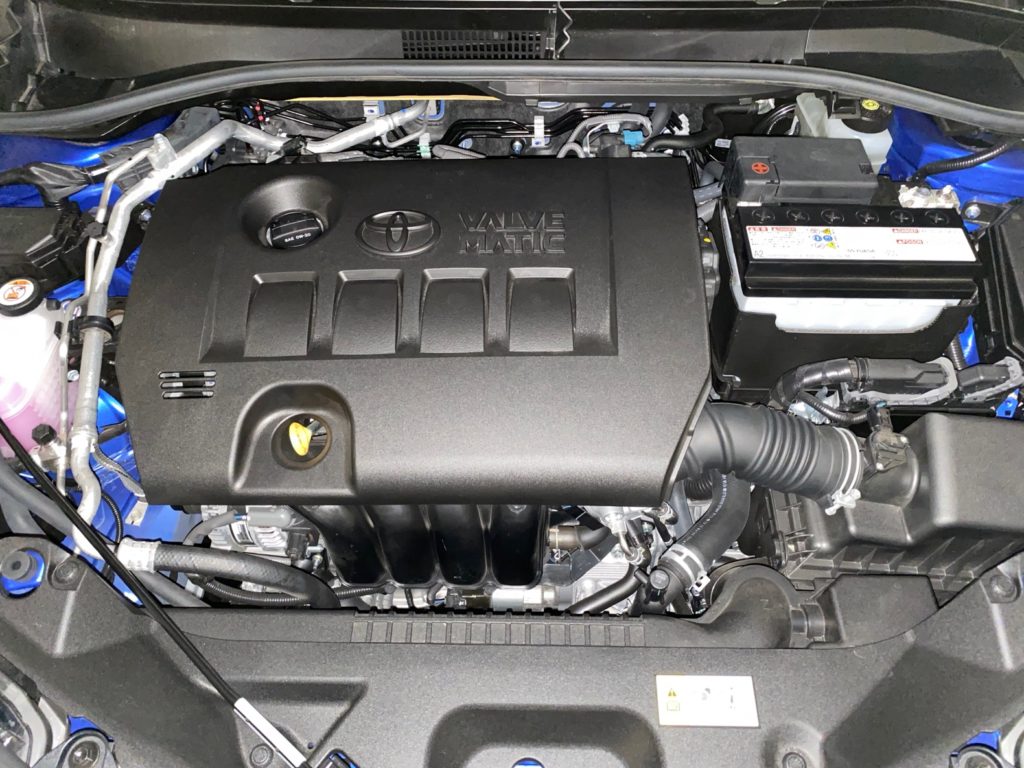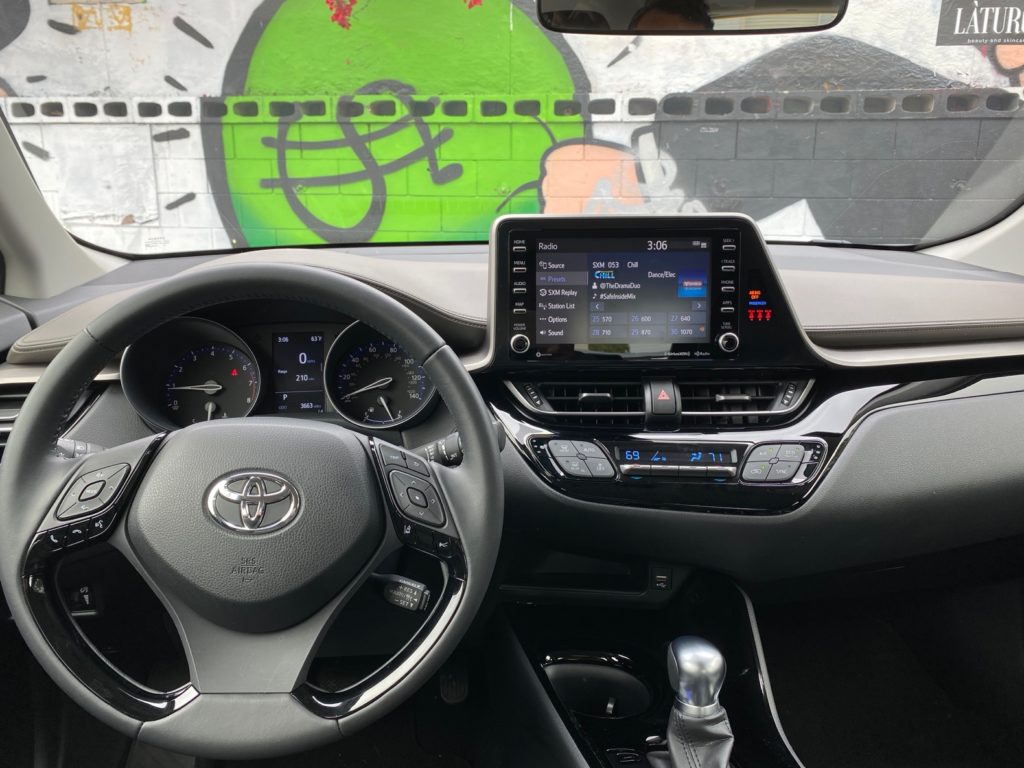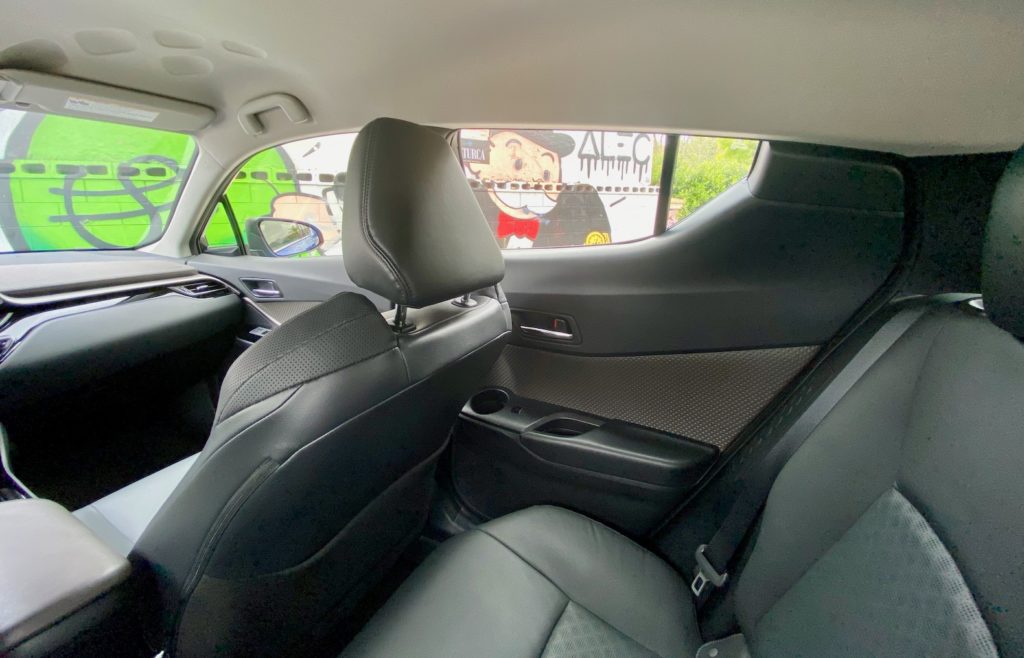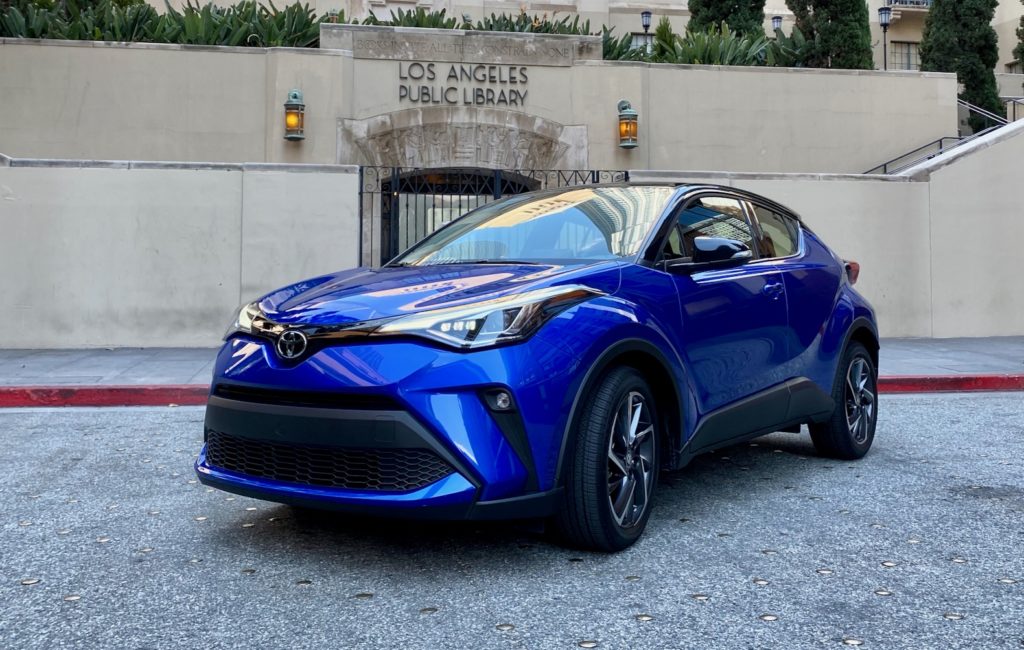The 2020 Toyota C-HR represents a unique take on the subcompact crossover with its coupe-like profile, in your face styling and front-wheel drive only powertrain. The C-HR is Toyota’s smallest SUV, but its styling and color options are meant to help it stand out, but is there a cost. The C-HR may grab your attention more than the Honda HR-V, but there are some compromises.
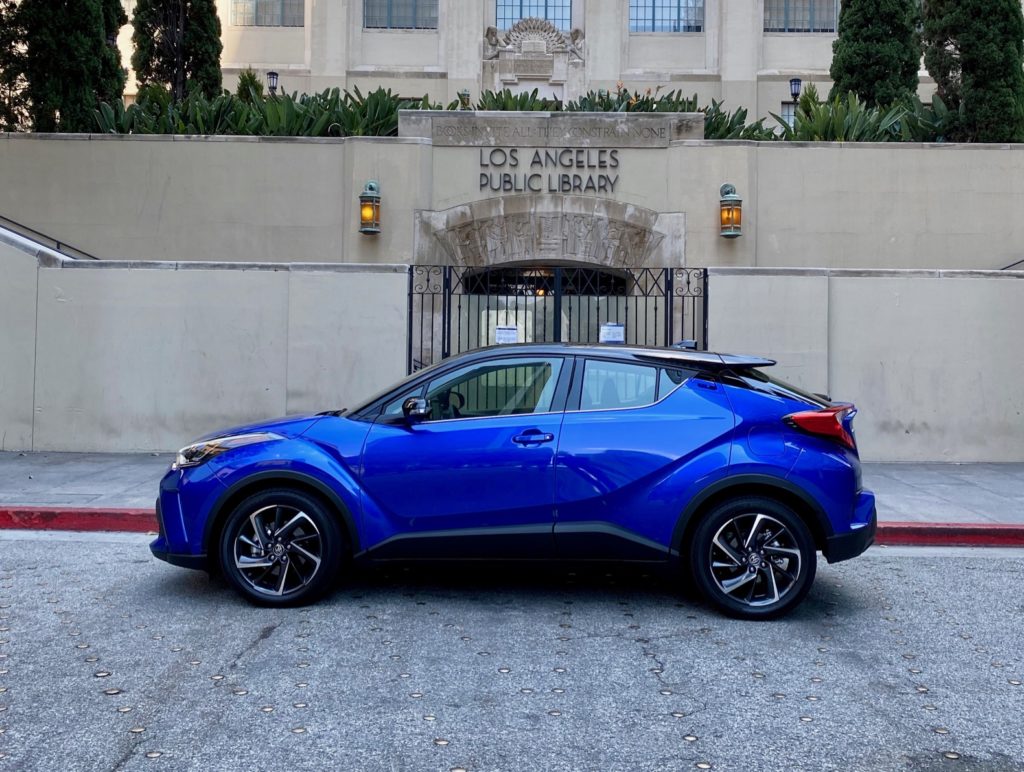
The 2020 C-HR received a light refresh for the new model year, which includes a restyled front bumper, grille and headlights. There are also new wheel designs to top off the exterior updates. Inside the 2020 C-HR looks mostly the same, but Android Auto and and SiriusXM satellite radio is now standard on the LE trim level, while front seatback pockets and sun-visor extensions have been added to the mid-grade XLE trim level. The top of the line C-HR Limited now comes standard with an eight-way power driver’s seat and adaptive headlights.
You’ll be hard pressed to see the design changes on the 2020 C-HR, which is a good thing if you like the overall look of the C-HR, but bad if you were already turned off by its polarizing looks. While the crossover segment has become over saturated with crossovers that often all look the same, we have to give Toyota a few props for trying something different. Which probably largely has to do with the fact that the C-HR was originally supposed to be a millennial focused small crossover. The C-HR doesn’t fade into the background like too many other crossovers.
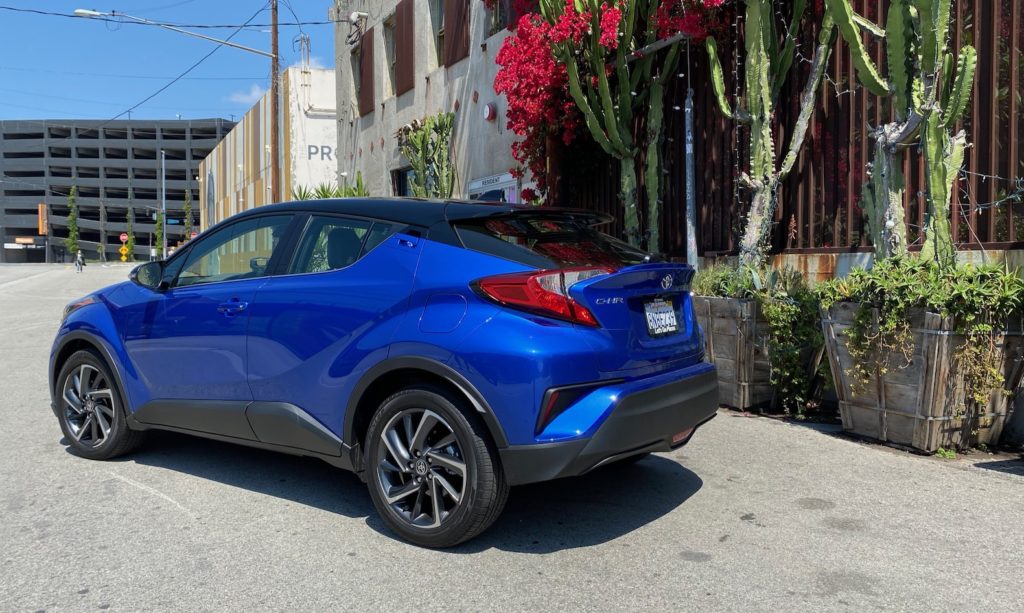
Under the hood the 2020 C-HR is only offered with one powertrain, a 2.0-liter four-cylinder engine that’s mated to a continuously variable automatic transmission (CVT). You won’t find all-wheel drive anywhere on the options list, so if even light off-roading is something you’re planning for the weekend, you may want to check out the Honda HR-V or Jeep Renegade. With only 144 horsepower and 139 lb-ft. of torque, the C-HR’s four-cylinder has a tough time keeping up.
The C-HR is slow to get up to speed on the freeway, but around town the powertrain’s responsiveness does make it seem like the C-HR is packing a bit more power. Running errands or commuting to work you probably won’t notice the powertrain’s shortcomings, but push it hard and the engine just starts to scream, but you won’t notice much in terms of speed.
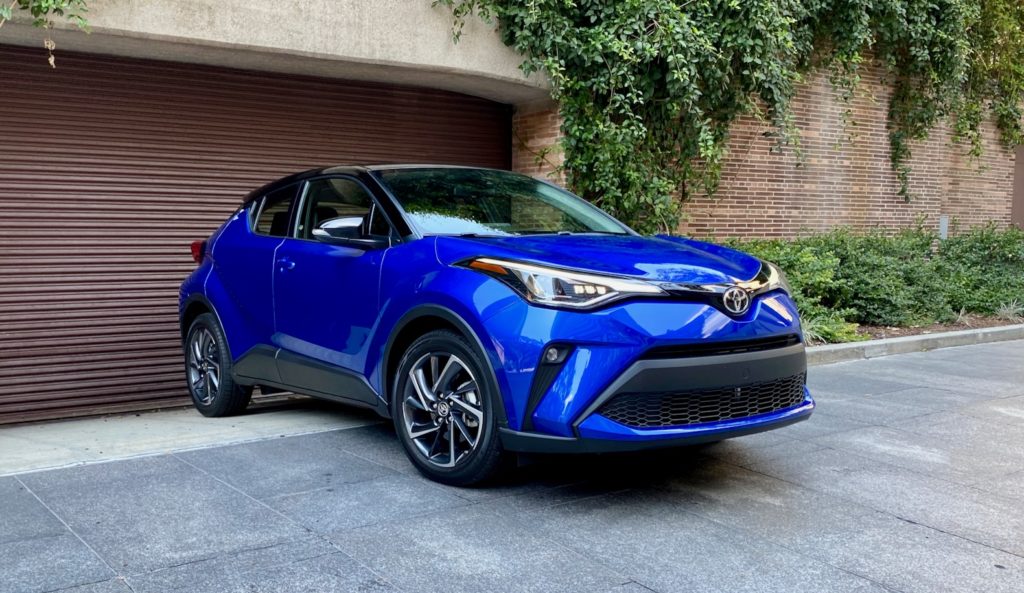
The C-HR’s suspension does a good job of keeping body roll to a minimum, but on harsher pavement the suspension can be a bit too stiff. On a positive note the C-HR’s steering does provide adequate feedback and its quickness does make the C-HR feel agile.
If fuel efficiency is one of your must haves the C-HR is rated at 27 mpg city, 31 mpg highway and 29 mpg combined. That’s on par with the front-wheel drive HR-V, which is rated at 28 mpg city, 34 mpg highway and 30 mpg combined. The Mazda CX-3 is rated at 29 mpg city, 34 mpg highway and 31 mpg combined.
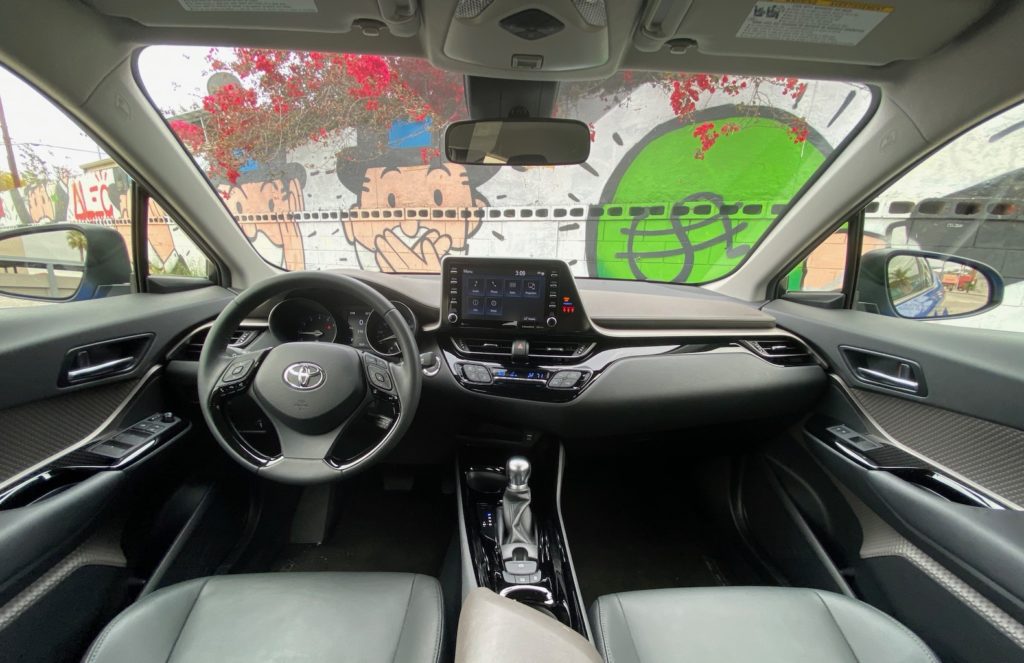
Inside the C-HR features mostly high quality materials and a stylish layout with an eight-inch touchscreen infotainment system sitting on top of the dashboard. The system comes standard with Apple CarPlay, Android Auto and SiriusXM satellite radio. The C-HR comes standard with the latest driver assistance features, like automatic emergency braking, adaptive cruise control and lane keeping assist.
While we gave Toyota props for trying to make the C-HR look different, that coupe-like styling comes at a cost. The C-HR’s interior feels claustrophobic, especially for rear seat passengers, since the sheetmetal for the rear doors intrudes where the windows would usually be. That outward visibility is also an issue when trying to change lanes. Rear legroom is also an issue since the C-HR only has 31.7-inches of space for your legs compared to 39.3-inches in the Honda HR-V.
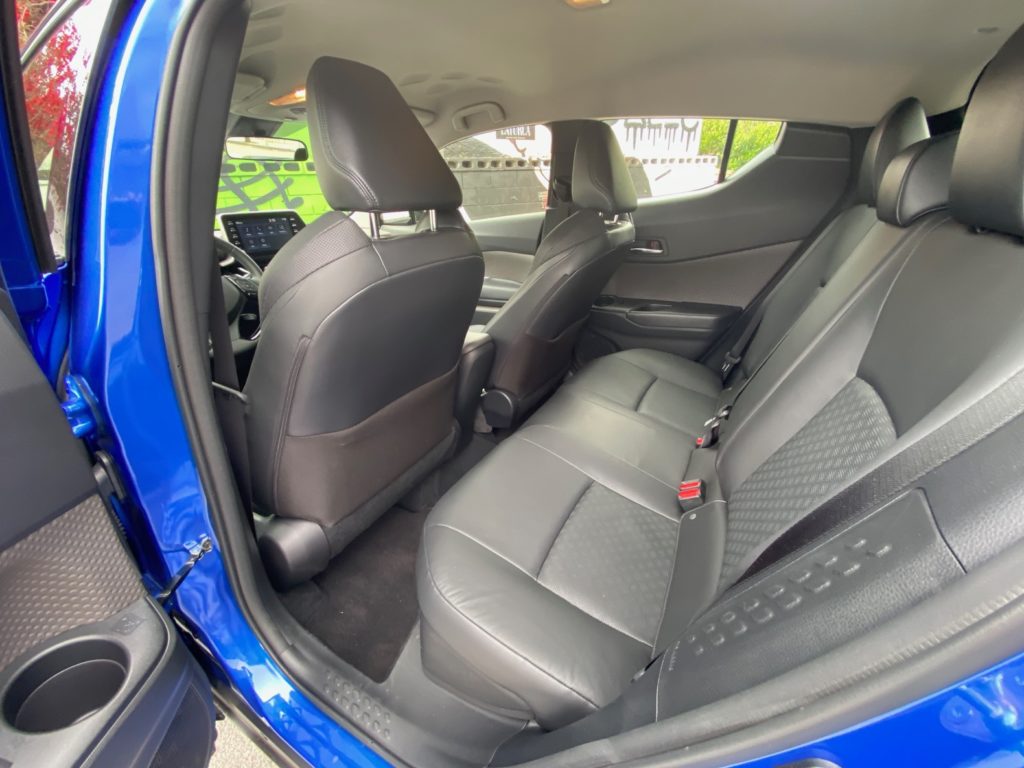
Cargo space is also on the small side with 19.1 cubic feet of space with the rear seat up. Again the HR-V beats the C-HR with 23.2 cubic feet. With the rear seats folded the C-HR has 37.0 cubic feet of space compared to 57.6 cubic feet in the HR-V.
The pricing for the 2020 Toyota C-HR starts at $22,415 for the base LE trim level. The LE comes standard with the 8-inch touchscreen with Apple CarPlay, Android Auto, and Amazon Alexa; LED headlights; automatic climate control; adaptive cruise control; automatic emergency braking and lane departure warning with steering assist. The XLE trim level starts at $24,450 and it adds 18-inch alloy wheels; a push button start; a blind spot monitor; and power folding mirrors. The top of the line Limited trim level starts at $27,640 and adds leather seats and adaptive headlights.
The Toyota C-HR features distinctive styling inside and out, which helps it stand out in the crowded segment. It has agile handling, but its underpowered engine is its achilles heel. If you’re looking for something unique in this segment, the C-HR is definitely a stand out, but compared to its competition, its small interior and lack of all-wheel drive puts it towards the back of the pack.

